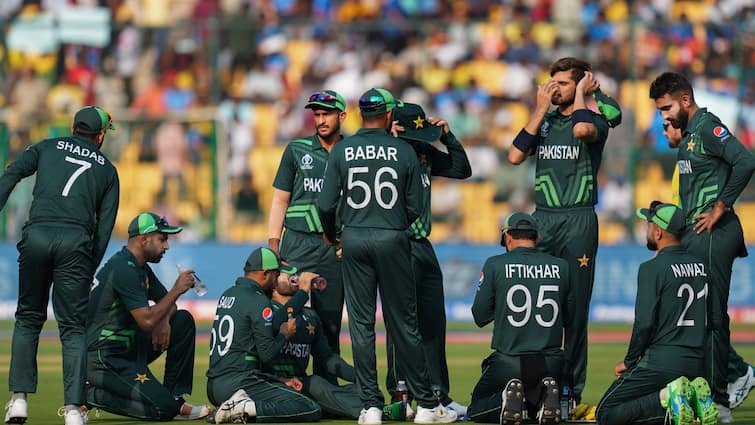
…म्हणून आंदोलकाच्या कंबरेत लाथ मारली, DYSP चं स्पष्टीकरण, म्हणाले 'महिला कर्मचाऱ्याच्या अंगावर…'
Jalna News : स्वातंत्र्यदिनानिमित्त जालना जिल्ह्याच्या पालकमंत्री असणाऱ्या पंकजा मुंडे यांच्या हस्ते ध्वजारोहण करण्यात आले. यावेळी एक विचित्र प्रकार घडला. पंकजा मुंडे यांचा ताफा अडवून आत्मदहन करण्याचा प्रयत्न एका आंदोलकाने केला. त्याला रोखण्यासाठी पोलिसांनी ताब्यात घेतलं असताना आंदोलकाच्या कमरेत DYSP अनंत कुलकर्णी यांनी फिल्मी स्टाईलने लाथ घातल्याची घटना घडली. या घटनेचा व्हिडीओ सोशल मीडियावर व्हायरल झाला आहे. त्यानंतर राजकीय वर्तुळात या घटनेवर अनेक संतप्त प्रतिक्रिया उमटल्यानंतर आता DYSP अनंत कुलकर्णी यांनी या घटनेवर स्पष्टीकरण दिलं आहे. (Jalna police viral video of officer kicking protester sparks public outrage dysp anant kulkarni clarification)
DYSP अनंत कुलकर्णी यांचं स्पष्टीकरण
DYSP अनंत कुलकर्णी म्हणालेत की, गोपाल चौधरी हे मागच्या काही दिवसांपासून जालना जिल्हाधिकारी कार्यालयासमोर उपोषण करत आहेत. यावेळी पोलिसांनी त्यांची अनेकवेळा समजूत काढण्याचा प्रयत्न केला आहे. इतकं करून देखील 15 ऑगस्टला पंकजा मुंडे दौऱ्यात असताना त्यांनी अंगावर रॉकेल टाकून आत्मदहनाचा करण्याचा प्रयत्न केला. यावेळी पोलिसांनी त्यांना रोखण्याचा प्रयत्न केला असता त्यांनी पोलीस महिला कर्मचाऱ्याच्या अंगावर रॉकेल टाकलं म्हणून त्यांना ताब्यात घेण्यासाठी बळाचा वापर केल्याचं पोलीस उपविभागीय अधिकारी अनंत कुलकर्णी यांनी स्पष्टकरण दिलं आहे.
काय आहे प्रकरण?
जालना शहरातील चौधरी कुटूंबातील सून ही लग्नानंतर घटस्फोट न घेता निघून गेली. एवढंच नाही तर तिने दुसरं लग्न ही केलं याची तक्रार कुटूंबातील पती गोपाळ आणि रमेश चौधरी यांनी पोलिसात केली होती. मात्र पोलिसांनी सुनेच्या उलट तक्रारीवरूनच चौधरी कुटुंबावर कौटुंबिक वादातून जालना शहरातील कदीम जालना पोलीस ठाण्यात गुन्हा दाखल केला. याचं गुन्ह्यामुळे चौधरी कुटुंबानी गेल्या अनेक दिवसापासून सुनासह त्यांच्या नातेवाईकांच्या विरुद्ध गुन्हा दाखल करावा म्हणून आंदोलनाचा पावित्र घेतला. मात्र कुणाचं दाद देत नसल्याने स्वातंत्र्यदिनानिमित्त जालन्याच्या पालकमंत्री पंकजा मुंडे या जालना दौऱ्यावर असताना त्यांचा ताफा जात असताना चौधरी कुटुंबातील आंदोलकांने पंकजा यांचा ताफा अडवून निवेदन देण्याचा प्रयत्न केला. यावेळी पोलिसांनी निवेदन देण्याचा प्रयत्न करणाऱ्या आंदोलकांना ताब्यात घेतलं.
जर निवेदन देण्यासाठी आलेल्या माणसाला तुम्ही जर अस लाता मारत असाल तर तुमची लायकी नाही अधिकारी होण्याची. आणि त्या छोट्या मुलाच्या मनावर काय परिणाम झाला असेल?
स्वतः हफ्ते घेऊन जगणार मस्ती करणार. लोकांना अस मारणार @DGPMaharashtra@CMOMaharashtra @anjali_damania pic.twitter.com/cRF54x382n
— deva (@VinodWayal38230) August 15, 2025
त्याचवेळी आंदोलकांना पोलीस स्टेशनमध्ये घेऊन जात असतानाच जालन्याच्या उपविभागीय पोलीस अधिकारी अनंत कुलकर्णी यांनी चक्क पाठीमागून येऊन ताब्यात घेतलं. यावेळी DYSP अनंत कुलकर्णी यांनी आंदोलकाच्या कंबरेत पाठीमागून धावत येत फिल्मी स्टाईल लाथ मारल्याचा धक्कादायक प्रकार घडला. या सर्व प्रकारामुळे आंदोलकांप्रमाणेच सामान्यांमध्येही नाराजी व्यक्त करण्यात येत आहे.
FAQ
1. जालना येथे स्वातंत्र्यदिनानिमित्त कोणता कार्यक्रम झाला?
स्वातंत्र्यदिनानिमित्त जालना जिल्ह्याच्या पालकमंत्री पंकजा मुंडे यांच्या हस्ते ध्वजारोहणाचा कार्यक्रम झाला.
2. या कार्यक्रमादरम्यान कोणता विचित्र प्रकार घडला?
पंकजा मुंडे यांचा ताफा अडवून गोपाल चौधरी नावाच्या आंदोलकाने अंगावर रॉकेल टाकून आत्मदहनाचा प्रयत्न केला. त्याला रोखण्यासाठी पोलिसांनी त्याला ताब्यात घेतलं, यावेळी DYSP अनंत कुलकर्णी यांनी आंदोलकाच्या कमरेत लाथ मारली, जी घटना व्हायरल झाली.
3. DYSP अनंत कुलकर्णी यांनी या घटनेवर काय स्पष्टीकरण दिलं?
DYSP अनंत कुलकर्णी यांनी सांगितलं की, गोपाल चौधरी गेल्या काही दिवसांपासून जालना जिल्हाधिकारी कार्यालयासमोर उपोषण करत होते. त्यांची समजूत काढण्याचा प्रयत्न केला गेला, पण त्यांनी पंकजा मुंडे यांच्या दौऱ्यादरम्यान आत्मदहनाचा प्रयत्न केला. यावेळी त्यांनी एका महिला पोलिस कर्मचाऱ्यावर रॉकेल टाकलं, म्हणून बळाचा वापर करून त्यांना ताब्यात घेतलं.
4. या प्रकरणाचं मूळ कारण काय आहे?
चौधरी कुटुंबातील सून लग्नानंतर घटस्फोट न घेता निघून गेली आणि तिने दुसरं लग्न केलं. याबाबत गोपाल आणि रमेश चौधरी यांनी पोलिसांत तक्रार केली, पण पोलिसांनी सुनेच्या तक्रारीवरून चौधरी कुटुंबावरच कौटुंबिक वादाचा गुन्हा दाखल केला. यामुळे चौधरी कुटुंबाने सुनेच्या आणि तिच्या नातेवाईकांविरुद्ध गुन्हा दाखल करण्यासाठी आंदोलन सुरू केलं.



